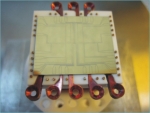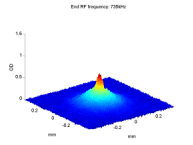Surface Physics
Atom-surface interactions
In atom chips, atoms are trapped as close as few microns from the surface of a conductor, a superconductor or a dielectric material. At such short distances, an intriguing effect of quantum fluctuations of the vacuum – the so-called “Casimir-Polder force” – applies to them. Interest in the Casimir-Polder force near special geometries, e.g. nanowires or carbon nanotubes, is both fundamental (for an understanding of vacuum fluctuations) and practical (for improved trapping of atoms). Another question about atom-surface interactions is what thermal fluctuations in the surface do to magnetic degrees of freedom of atoms (spin flips or spin decoherence) and on their spatial degrees of freedom (heating and spatial decoherence).
Surfaces of superconducting atom chips
In this century, atom chips have demonstrated their usefulness in basic research
and in applications (e.g. atomic clocks) while the atom-chip community has grown
from three groups to nearly 50. The next generation of atom chips will have
superconducting surfaces to reduce electromagnetic noise and trap atoms closer.
Efficient design of such a chip, and an understanding of the electromagnetic fields
so close to it, are two theoretical challenges. A grant from the German-Israeli Foundation
(G.I.F.) for the years 2009-2011 supports our research.
[V. Dikovsky, V. Sokolovsky, B. Zhang, C. Henkel and R. Folman,
Superconducting atom chips: advantages and challenges, Eur. Phys. J. D 51 (2009) 247.]

